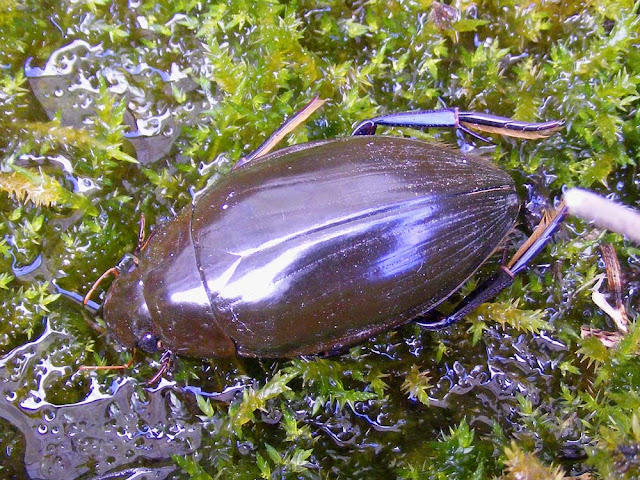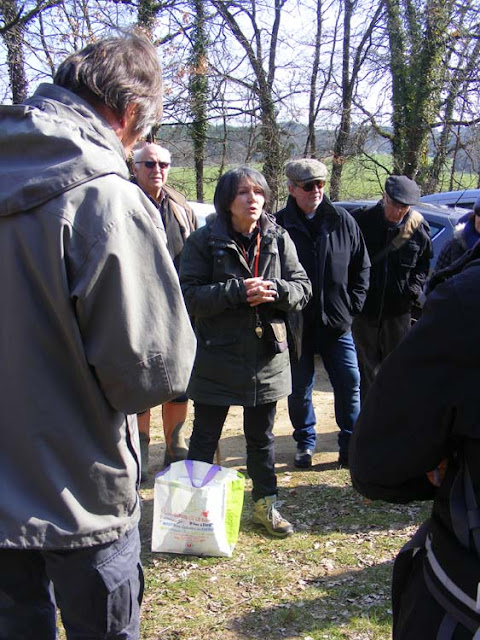A flash of red in the entrance to this cave caught my eye. It turned out to be a smurf on a garden seat.

*********************************************************
Au jardin hier: There was a Brimstone butterfly (Fr. Citron) flapping about, a couple of Dark-edged Bee Flies (Fr. Grand bombyle), a bumble bee (Fr. bourdon) queen (with a white tail, but I didn't get a good enough look to determine the species) and some Honey Bees (Fr. Abeille européene) and small solitary bees. The Glanville Fritillary (Fr. Mélitée du plantain) caterpillars (Fr. chenille) are starting to venture out and about a bit, but still together in their groups.
The bee hotel that Kath made me has had an accident and its contents scattered on the ground. Either a squirrel has been jumping up and down on it or the wind has tossed it about. It has been taken over by Paper Wasps (Fr. guêpes), which I suppose is somewhat more convenient that the gatepost they occupied last year.
I have my eye on one of the orchid leaf rosettes. It is clearly different to all the others. What species will it turn out to be I wonder? The Greater Stitchwort, Greater Star of Bethlehem (Fr. La Belle-d'onze-heures), Sweet Violets (Fr. Violette odorante) and Primroses (Fr. Primavere) are all flowering. In the potager the 'spare' tulips are out and there are some escapee pinky purple Primulas in the grass.
The blackcurrants have their first little leaves and the first asparagus spear is up. Sadly the asparagus doesn't thrive, so I never get enough spears to harvest, but it always sends up a few spindly efforts. The nectarines are flowering better than they have for the last few years so I am hoping for a good crop since they are amongst my favourites. It's still too early to tell though, and they often get caught out with dry weather later on.
**********************************************
A la cuisine hier: Onion bhajis, which are one of the few deep fried dishes I am prepared to bother with.
*****************************************
Smartraveller: I have finally registered us on Smartraveller. This is the Australian Government's website for Australian nationals who are currently overseas travellers and or expats. We were advised to register last year when I renewed my Australian passport in Paris. I've tried twice before but couldn't get the website to work. Yesterday it worked with no hassle at all. To register you need to have on hand your Australian and any foreign passport numbers for yourself and whoever else you are registering as part of your group. You will also need phone numbers and addresses for whoever you want to nominate as your emergency contact. You can register multiple people together and multiple emergency contacts. Although the online registration is designed for travellers rather than those who are resident in another country, the embassy advises that people like us register too. In certain situations, such as wars, natural disasters and major accidents it is useful if the Australian government can identify and locate its citizens abroad.


















































